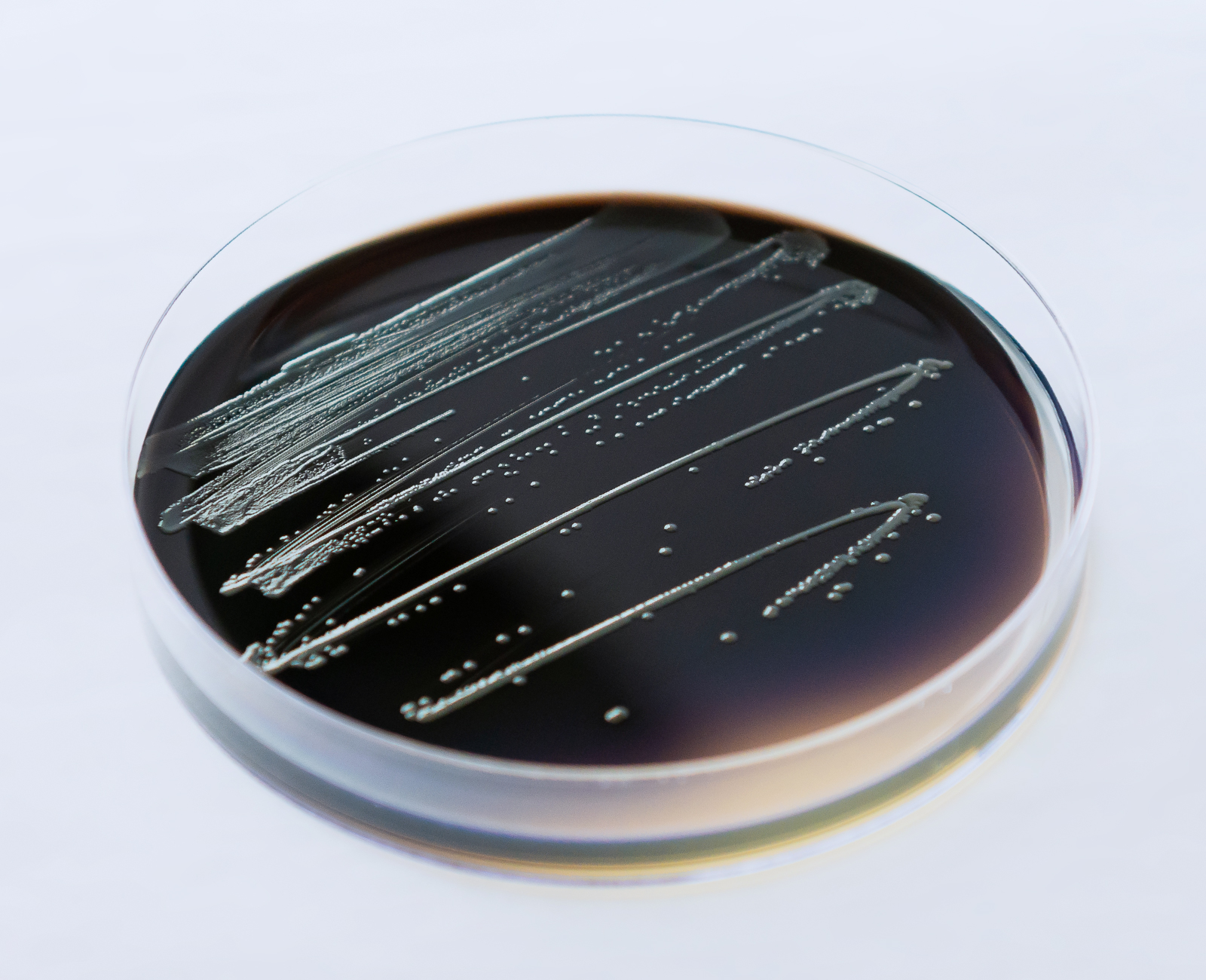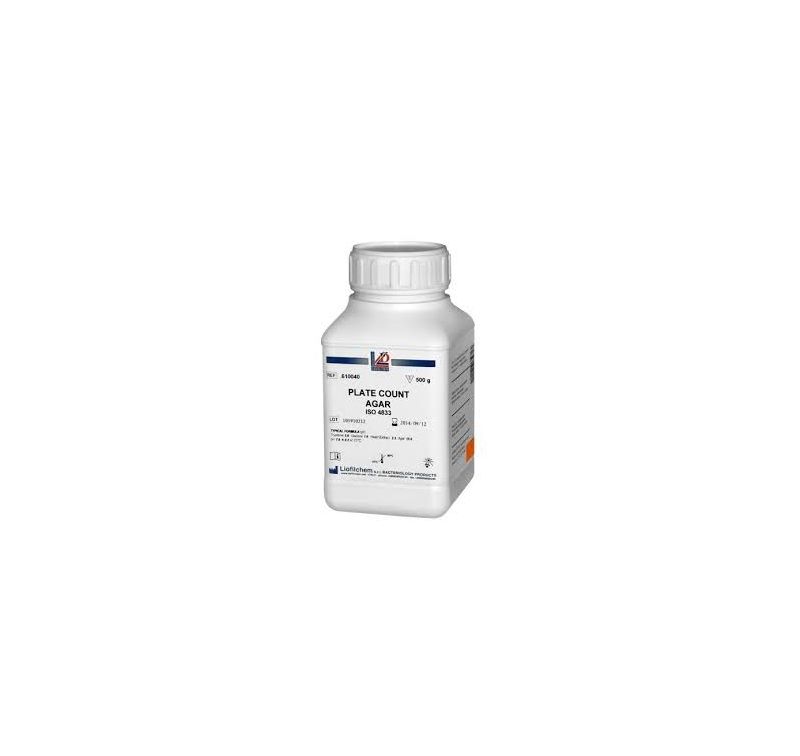
Bilis Esculina Azida Agar x 500 g 01592500 SCHARLAU Scharlab
Bile Esculin Agar (agar bilis esculina) es un medio para la identificación presuntiva de la especie Enterococcus y los estreptococos del grupo Streptococcus bovis. REALIZACION DEL PROCEDIMIENTO DE ANALISIS Inocular muestras representativas con los cultivos enumerados a continuación.

Placa Ágar Bile Azida Esculina 90mm Plastlabor
Application: Confirmation of intestinal enterococci, Membrane filtration methodPackaging: 90 mm plate (20 plates per box)Synonym: Enterococcus Selective Agar. Bile Esculin Azide Agar MSDS (material safety data sheet) or SDS, CoA and CoQ, dossiers, brochures and other available documents. SDS.

Agar bilis esculina deshidratado L610210. Frasco 500 g
Bile esculin agar is a selective and differential medium which is used to presumptively identify enterococci and group D streptococci based on the ability of an organism to hydrolyze esculin. Beef extract (11 g), enzymatic digest of gelatin (34.5 g), esculin (1 g), ox bile (2 g), ferric ammonium citrate (0.5 g), agar (15 g), per 1000 mL, pH 6.6.

BD BBL Prepared Plated Media Bacteroides Bile Esculin Agar (BBE) Bacteroides Fisher Scientific
PERFORMANCE CHARACTERISTICS5. Bile Esculin Azide Agar w/ 6 μg/ml Vancomycin (BEAV) was evaluated with a total of 2,777 specimens from 2,127 inpatients (2,264 urine and 513 stools, for C. difficile analysis). No yeast, gram-negative bacteria, or vancomycin-susceptible gram-positive bacteria grew on the medium. Of 378 specimens that yielded.

Enterococcosel Agar (Bile Esculine Azide Agar) (108) GRASO Biotech
El agar bacteriológico se adiciona como agente solidificante. La tolerancia a la bilis y la capacidad de los microrganismos para hidrolizar la esculina constituyen una prueba para la identificación presuntiva de Enterococos. FÓRMULA POR LITRO Sales biliares 40.0 g Esculina 1.00 g Peptona de carne 5.0 g Citrato férrico 0.50 g

AGAR BILIS ESCULINA Lab Medibac
El agar bilis esculina es un medio de cultivo sólido, selectivo y diferencial. Es utilizado como prueba diagnóstica para determinar la capacidad que posee un determinado microorganismo de crecer en un medio que contiene bilis y además descomponer el glucósido esculina en esculetina y glucosa.

Bile Esculin Agar CBSAlife
La prueba de bilis-esculina se realiza en un agar diferencial selectivo; agar bilis-esculina, que consta de bilis y esculina. El agar contiene diferentes sales biliares que inhiben el crecimiento de otros organismos grampositivos y permite el aislamiento selectivo de enterococos y estreptococos del grupo D.

Thermo Scientific™ Agar bilis esculina, monoplaca de 90 mm Inicio Fisher Scientific
Bile Aesculin Azide Agar, acc. to ISO 7899-2 MSDS (material safety data sheet) or SDS, CoA and CoQ, dossiers, brochures and other available documents. SDS. CoA. Brochures. Technical Information. Required Licenses. ph Value: 6.9 - 7.3 (54.85 g/l, H₂O, 25 °C) (after autoclaving) Solubility: 54.85 g/l. View Products on Sigmaaldrich.com.

Thermo Scientific Remel Bile Esculin Agar/ BHI Agar w/6.5 NaCl Bile Esculin Fisher Scientific
Bile esculin agar (BEA) is a differential and selective medium and is mainly used to discern group D Streptococci and Enterococci based on the organism′s potential to hydrolyze esculin. BEA comprises of oxygall (bile salts, first selective ingredients) and azide (second selective ingredients), former inhibits the growth of gram positive organisms and latter inhibits the growth of gram.

Bile Aesculin Azide Agar, acc. to ISO 78992 100072
1. Inoculate Bile Esculin Azide Agar with 2-3 colonies from a pure culture of the test isolate. Alternatively, inoculate with two drops of a pure, 24 hour Todd-Hewitt Broth culture. 2. Incubate aerobically at 33-37°C for up to 72 hours. 3. Examine plate daily for blackening in the medium around the colonies. INTERPRETATION OF THE TEST

Enterococcus faecalis em Agar Azida Bile Esculina ConectaMicro
Esculin Bile Agar NACRES: NA.74 Pricing and availability is not currently available. Recommended Products Millipore 06105 Bile esculin azide agar View Price and Availability Millipore 72678 Bile esculin azide agar ISO 7899-2:2000 View Price and Availability Sigma-Aldrich P1754 TWEEN® 80 View Price and Availability Millipore 53286

Enterococcosel Agar (Bile Esculine Azide Agar) z wankomycyną (6 mg/l) (1072) GRASO Biotech
El Agar Bilis Esculina se usa preferentemente para diferenciar entre Enterococcus y Streptococcus. Los miembros del género Enterococcus son capaces de crecer en presencia de un 4% de bilis (oxgall) e hidrolizar la esculina para formar glucosa y escule8na. La escule8na se combina con iones de hierro formando un complejo de color negro.

AGAR BILIS ESCULINA. 500G. BBL Prolab de Michoacan
Product Description & Summary. BBE agar contains casein, soy peptones, hemin, and vitamin K 1 as the nutritive base of the media. Selective agents include gentamicin, which inhibits facultative anaerobes, and bile, which inhibits most gram-positive bacteria and anaerobic organisms other than the B. fragilis group. The addition of esculin and ferric ammonium citrate to the media permits the.

Bile Esculin Agar BiosLogos
Bile Esculin Agar ( BEA) is a selective differential agar used to isolate and identify members of the genus Enterococcus, [1] formerly part of the "group D streptococci" (enterococci were reclassified in their own genus in 1984). [2] Composition and process Enterococcus colonies (black) growing on BEA

Thermo Scientific Bile Esculin Azide Agar with Bile Esculin Fisher Scientific
Agar bilis esculina (por sus siglas en inglés, BEA) es un medio selectivo y diferencial que se usa para aislar e identificar un gran número de miembros del género Enterococcus, 1 y también Streptococcus del grupo D., 2 agar selectivo para el aislamiento de salmonella, especialmente thypi. Composición y proceso

Agar bilis esculina medioscultivolcb1
Bile Esculin Azide Agar is a modification of the medium reported by Isenberg and Isenberg, Goldberg, and Sampson. This formula modifies Bile Esculin Agar by adding sodium azide and reducing the concentration of bile. The revised medium is more selective, but still provides rapid growth and efficient recovery of group D streptococci.